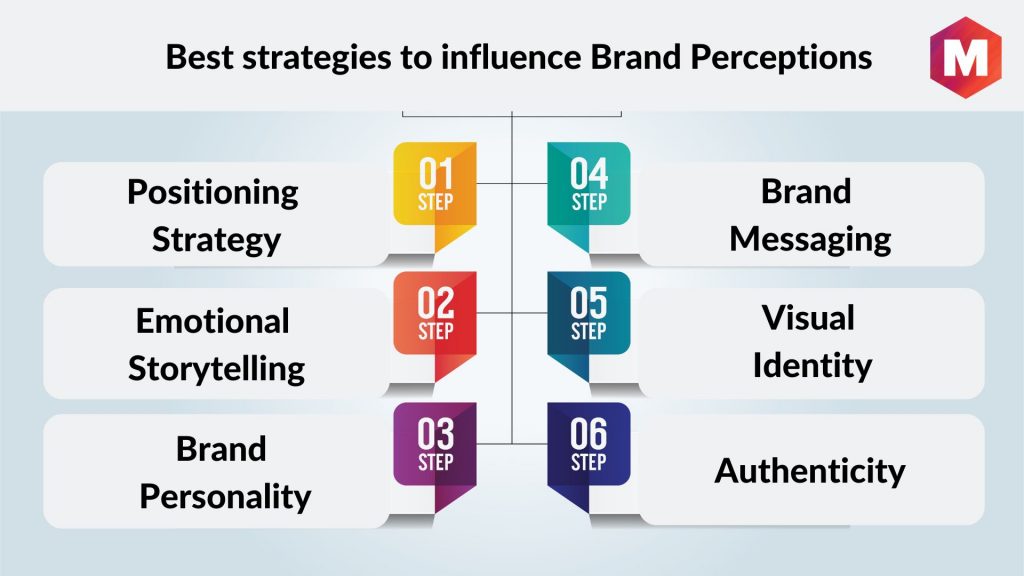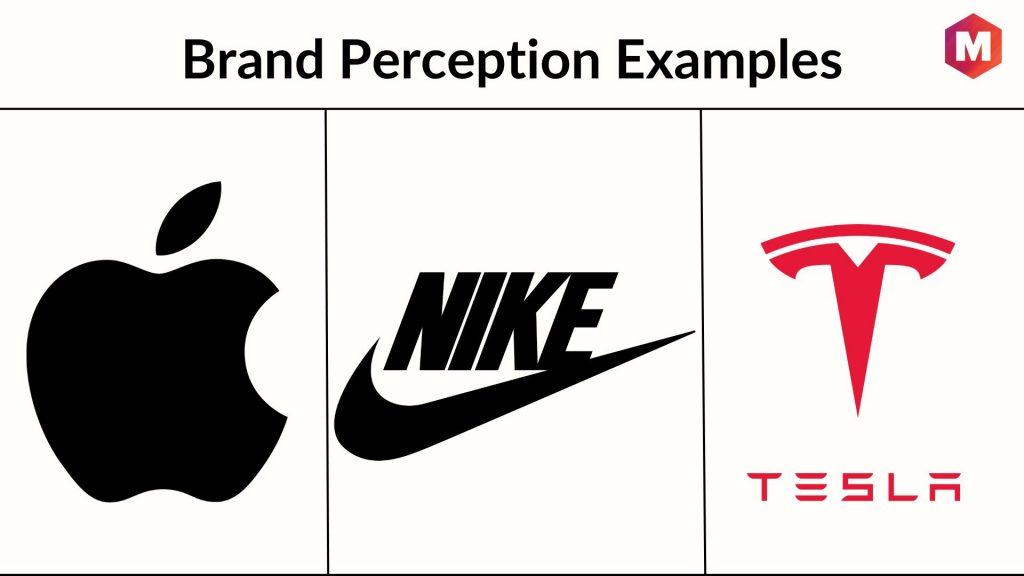Table of Contents
What is Brand Perception?
Brand perception is how others perceive your brand. It’s a combination of how you present yourself, the messages you communicate, and the experiences customers have when engaging with your brand.
Creating an intentional brand perception is vital as it will shape your brand identity, influence customer loyalty, and be a critical factor in driving sales. Your brand perception will make you stand out from competitors and be remembered.
The best way to create a unique brand perception is by finding the right balance between how you want to be seen and how customers see you. You can do this by gathering feedback from your target audience, understanding their needs and preferences, and creating brand messaging and experiences that align with their expectations.
Definition
Brand perception is the way a company’s prospective customers feel about its brand attributes, products, and services. Consumer brand perception involves understanding how the public views a product or service.
A company’s brand perception research is essential for companies to measure brand perception efficiently through brand perception research. This research helps you understand the feelings and perceptions of your target customers about your brand, products, and services.
Why Is Brand Perception Important?
Brand perception is important because it’s how customers and prospects form an opinion about your brand. It determines whether or not they will trust you, buy from you, and recommend you to others.
If your brand perception is poor, customers may be discouraged from doing business with you, decreasing sales, brand loyalty, and valuable word-of-mouth recommendations.
On the other hand, a positive brand perception will help attract new customers and retain existing ones and increase brand loyalty. Some of the advantages of positive brand perception are-
- Increased brand awareness
- Higher customer trust and loyalty
- Improved brand reputation
- Enhanced credibility with customers, partners, and the media
- More word-of-mouth recommendations
- Higher brand value and more substantial brand equity, etc.
While some of the consequences of negative brand perception are-
- Lower brand awareness
- Reduced brand loyalty
- Poor brand reputation and credibility
- Less word-of-mouth recommendations
- Lower brand value and weaker brand equity, etc.
What Factors affect Brand Perception?
Different factors can affect how consumers perceive your brand. These include:
- Brand messaging – What kind of stories and messages are you conveying about your brand?
- Brand identity – Does your brand have a unique look and feel that appeals to customers?
- Customer service – Are you providing good customer service?
- Products/services – Are the products or services you offer high quality?
- Brand experiences – How do people feel after engaging with your brand?
- Brand associations – What associations do people have with your brand?
- Social media presence – Are you present and engaging on social media?
Considering all these factors, you can create a brand perception that stands out from the crowd and resonates with your target audience. This will help drive brand loyalty, value, and sales.
How to create a Positive Brand Perception?
Creating a positive brand perception requires an intentional strategy. Here are some tips to help you get started:
- Gather feedback – Collect customer feedback to understand their needs and preferences.
- Identify brand values – Define your brand values, mission, and vision.
- Create a brand story – Develop stories that showcase what makes your brand unique.
- Build brand experiences – Design memorable experiences for customers.
- Monitor brand sentiment – Monitor brand sentiment to ensure it stays positive.
- Respond quickly and effectively – Address customer issues promptly and efficiently.
By following these steps, you can craft a compelling brand perception strategy that will benefit your business in the long run.
By creating an intentional strategy, understanding the needs of your target audience, and delivering brand experiences that align with their expectations, you can make a lasting positive brand perception. Ultimately, this will lead to increased brand loyalty and brand value – two things that are essential for long-term success.
Good brand perception is key to developing an effective brand strategy. By taking the time to understand your target audience and creating brand messaging and experiences that resonate with them, you can build a strong brand perception that drives customer trust, brand loyalty, and, ultimately, sales.
How to Measure Brand Perception?
1. Conducting brand perception surveys
Brand perception surveys are a great way to measure brand perception. Through these surveys, you can understand what customers think and feel about your brand and how they perceive it.
2. Using brand focus groups & forums
Brand focus groups & forums are an effective way to gauge brand perception. By engaging with consumers in these discussion settings, you can gain valuable information on their thoughts and opinions about your brand.
3. Monitoring Your Website Traffic
Tracking website traffic is one of the most effective ways to measure brand perception, as it gives you an insight into how people interact with your brand online. You can track website traffic through tools like Google Analytics or other web analytics platforms.
4. Optimizing Audience Outreach
Audience outreach is another powerful tool for measuring brand perception. Through this method, you can directly connect with your target audience and gain valuable insights into their views on your brand.
5. Tracking online mentions & do social media monitoring
Tracking online mentions and monitoring social media are two other effective ways to measure brand perception. Through these methods, you can track brand sentiment across various platforms and gain insights into how people perceive your brand.
6. Signing Up For Google Alerts
By signing up for Google alerts, you can keep track of brand mentions across the web and monitor brand sentiment in real-time. This will enable you to quickly identify any issues that might impact your brand’s perception.
7. Customer Feedback
Customer feedback is the best way to measure brand perception as it gives you direct insights into what customers think and feels about your brand. You can collect customer feedback through surveys, interviews, focus groups & forums, or other methods such as online reviews.
8. Reading Online Reviews
Reading online reviews is one of the most effective ways to understand brand perceptions. It gives you a bird’s eye view of what people are saying about your brand and how they rate it compared to its competitors.
9. Doing A Brand Audit
Doing a brand audit is a great way to assess brand perception at any given time. This will enable you to identify areas that need improvement, track brand performance over time, and make informed decisions about brand strategy.
10. Review Sites
Review sites such as Yelp, TripAdvisor, Google Reviews, etc., are powerful tools for measuring brand perception. You can understand what people think and feel about your brand and its products or services by visiting these sites.
11. Collecting Data From Customers
Collecting customer data is one of the best ways to measure brand perception, as it gives you direct insights into how they view your brand. This can include surveys, interviews, focus groups & forums, or other methods such as online reviews.
What are the senses that consumers use to form brand perceptions?
1. Visual
Visual brand perception is how customers perceive a brand based on its logo, colors, shapes, and other visual elements.
2. Auditory
Auditory brand perception is focused on how customers perceive a brand based on hearing its messages and sound identity through audio or video advertisements.
3. Olfactory
Olfactory brand perception concerns scent and aroma and how customers relate to these senses when interacting with the brand.
4. Taste
Taste brand perception focuses on how customers experience flavors associated with the brand’s products or services.
5. Emotional
Emotional brand perception focuses on the feelings and emotions customers associate with the brand – trust, happiness, sadness, etc. By monitoring brand sentiment and understanding how customers feel about a brand, you can gain valuable insights into brand perception.
Impact of Positive Perception
Brand perception can have a powerful impact on business growth and success when brand perception is positive. A strong brand reputation helps to build trust among potential buyers, increase customer loyalty, attract new customers, boost sales, enhance brand visibility, and create positive associations with the brand overall. On the other hand, negative brand perceptions can
Best Ways to Improve Brand Perception
1. Determining your audiences and their perceptions: The first step to improving brand perception is to identify your target audience and their current perceptions of the brand. This will allow you to design brand tactics that resonate with them and engage them meaningfully.
2. Developing a positive connection with customers: Building relationships with customers is essential for establishing trust and loyalty among potential buyers. You can do this by providing excellent customer service, prompt responses to inquiries, and engaging with customers on social media.
3. Listening and responding to feedback: Feedback is an invaluable resource for brand perception. It enables you to understand how people feel about your brand and what changes they want to see. You can build customer trust and loyalty by listening and responding to feedback.
4. Leveraging user-generated content: User-generated content, such as reviews or testimonials, can be a powerful tool for improving brand perception. By leveraging positive customer comments, you can showcase the value of your brand in an authentic way that resonates with potential buyers.
5. Being humble: Humility goes a long way regarding brand perception. By acknowledging mistakes and taking responsibility, you can show customers that your brand is trustworthy and reliable.
6. Paying attention to the market: Monitor brand trends in your industry so that you can adjust your brand messaging accordingly. This will help you stay ahead of the curve and ensure that your brand remains relevant to changing customer needs.
Best strategies to influence Brand Perceptions
Positioning Strategy
Positioning is the process of setting your brand apart from its competitors and creating a unique brand persona. It involves developing brand messaging that emphasizes your brand’s unique value to others.
Emotional Storytelling
Emotional storytelling can be an effective tool for influencing brand perception. You can create powerful connections between the brand and potential buyers by engaging customers with compelling stories that evoke emotion.
Brand Personality
Brand personality refers to the traits and values used to describe a brand’s identity. Developing a strong brand personality helps customers relate to the brand emotionally, which can positively influence brand perception.
Brand Messaging
Analyze customer feedback to develop brand messages that resonate with your target audience. Be sure to use language that is clear, consistent, and engaging.
Visual Identity
A brand’s visual identity plays an important role in brand perception. Design a brand identity that speaks to your brand values and resonates with potential buyers.
Authenticity
Authentic brand messaging can positively influence brand perception. Focus on building genuine customer relationships and being transparent about the brand’s practices.
These strategies will help you cultivate a strong brand perception that will resonate with potential buyers and increase customer loyalty.
You can build a successful brand reputation over time by monitoring brand sentiment, understanding customer perceptions, and using the best tactics for influencing brand perception.
Benefits of a Good Brand Perception
- Increased brand recognition
- Positive brand associations
- Improved customer loyalty
- Higher brand value
- More trust in the brand among potential customers
- Greater brand advocacy from customers
Examples of Brand Perception
Apple
Apple is a great example of creating an effective brand perception through thoughtful design and intuitive products. Apple’s brand messaging focuses on simplicity and innovation, which has helped it build strong relationships with its customers over the years.
Tesla
Tesla is another excellent example of how important brand perception can be for success. The company has established itself as an industry leader in electric vehicles thanks to its innovative technology and stylish designs that appeal to consumers of all ages.
Nike
Nike’s brand perception revolves around its message of “Just Do It,” which resonates with customers and encourages them to keep pushing their limits. The brand’s success is largely due to its inspirational messaging and innovative product designs.
By leveraging the power of brand perception, you can create a strong connection between your brand and potential buyers. With thoughtful brand messaging, engaging visuals, and positive customer experiences, you can build a brand reputation that will last for years.
Conclusion!
Understanding consumer brand perception is essential to a business’s success. A brand perception survey is a great way to track the overall brand perception and ensure the correct messaging is shared across all platforms.
Additionally, using social media platforms to get customer feedback and surveys can help you better understand your customers. By doing this, businesses can gain valuable insight into their brand perception and make the necessary changes to ensure they provide customers with the best experience possible.
Overall, brand perception surveys are a valuable tool that can help businesses understand their customers’ outlook on their brand and make the necessary changes to ensure they provide a positive customer experience. By understanding brand perception, businesses can better position themselves to succeed in the long term.
Liked this post? Check out the complete series on Branding


